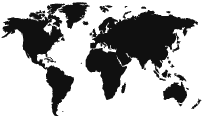The Moving Image Source Calendar is a selective international guide to retrospectives, screenings, festivals, and exhibitions.
Descriptions are drawn from the calendars of the presenting venues.

-
Henri-Georges Clouzot
 November 26–December 24, 2011 at
Museum of Modern Art
, New York
November 26–December 24, 2011 at
Museum of Modern Art
, New York
The human stain of treachery, cowardice, and deceit-a creeping moral and physical sickness-pervades the films of French screenwriter and director Henri-Georges Clouzot (1907-1977). Jealous husbands and wives concoct elaborate schemes to do each other in. Neighbors spy on fellow neighbors and rat one another out. All have their secret lives laid bare before a ravenous and contemptuous public, whether in the boarding house, the school, the sanitarium, the courtroom, or the petty, hateful little village. Like Lang, Hitchcock, and Chabrol, the filmmakers with whom he is most often compared, Clouzot eroticizes man's murderous instincts and takes perverse delight in implicating his audience. Unlike Hitchcock, however, order is rarely restored when sin, injustice, and faithlessness bring earthly misery. As this comprehensive retrospective amply demonstrates, Clouzot's was not a "cinema of quality," as the French New Wave critics unjustly derided, but rather a "cinema of cruelty," to which Franju, Polanski, Kubrick, and Haneke also belong.
Controversy trailed Clouzot throughout his career. His masterful breakthrough feature Le Corbeau (The Raven) (1943), made for the Nazi-stooge company Continental Films, was attacked on all sides-the right-wing Vichy regime, the left-wing Resistance press, and the Catholic Church-and though Sartre and Cocteau came to his defense, Clouzot was banned for several years after Liberation from making another film. François Truffaut would later describe Le Corbeau as "a fairly accurate picture of what I had seen around me during the war and the postwar period-collaboration, denunciation, the black market, hustling."
Pleasure comes from inflicting pain, whether in the squalid, perfidious love triangles (and quadrilaterals) of Quai des Orfèvres (1947), Diabolique (1955), La Vérité (1960), and La Prisonnière (1968), or in a concentration camp survivor's interrogation and torture of a wounded Nazi war criminal in "Retour de Jean," an episode of the postwar omnibus film Return to Life (1949).
But Clouzot's characters, particularly his women, are never without sympathy. In Manon (1949), his morally shaded postwar adaptation of l'Abbé Prévost's Manon Lescault (the novel on which Puccini's opera was also based), the film's cunning young prostitute is branded a collaborator and greedy opportunist, but she takes a former Resistance fighter as her lover. In La Vérité, the trial of Dominique Marceau (Brigitte Bardot, in an affecting performance) for the murder of her former lover becomes an assassination of her character, casting a harsh light on the hypocrisy and cruelty of male-dominated society.
While at the peak of their careers, Clouzot beat out Hitchcock for the right to adapt the novels on which Diabolique and The Wages of Fear were based, and MoMA's retrospective opens with these heart-stopping and perennially imitated suspense thrillers. The exhibition also features Le mystère Picasso (The Mystery of Picasso) (1956), Clouzot's documentary portrait of the artist at work, in which creation and destruction are twinned human impulses; his rarely screened first short film, the expressionist comedy La terreur des Batignolles (1931); two darkly clever policiers for which he wrote the screenplays, George Lacombe's Le Dernier des six (1941) and Henri Decoin's Strangers in the House (1942), as well as his own The Murderer Lives at Number 21 (1942); and Henri-Georges Clouzot's Inferno (2010), Serge Bromberg and Ruxandra Medrea's award-winning documentary about Clouzot's notoriously ill-fated, hallucinatory psychological thriller L'Enfer, an unfinished film that nearly finished him off.
Featured Works:
Fear in the Batignolles (La terreur des Batignolles, Henri-Georges Clouzot, 1931); Le Dernier des six (Georges Lacombe, 1941); Strangers in the House (Les Inconnus dans la Maison, Henri Decoin, 1942); The Assassin Lives at Number 21 (L'Assassin habite au 21, Henri-Georges Clouzot, 1942); The Raven (Le Corbeau, Henri-Georges Clouzot, 1943); Quai des Orfèvres (Henri-Georges Clouzot, 1947); Manon (Henri-Georges Clouzot, 1948); Jean's Return (Le Retour de Jean, Henri-Georges Clouzot, 1949); Miquette and Her Mother (Miquette et sa Mère, Henri-Georges Clouzot, 1949); The Wages of Fear (Le salaire de la peur, Henri-Georges Clouzot, 1953); Diabolique (Les Diaboliques, Henri-Georges Clouzot, 1955, pictured); The Mystery of Picasso (Le Mystère Picasso, Henri-Georges Clouzot, 1956); The Spies (Les Espions, Henri-Georges Clouzot, 1957); The Truth (La Verité, Henri-Georges Clouzot, 1960); Woman in Chains (La Prisonnière, Henri-Georges Clouzot, 1968); Inferno (L'Enfer, Serge Bromberg and Roxandra Medrea, 2009)
Program information:
Hravard Film Archive
The Complete Henri-Georges Clouzot
November 26-December 18, 2011
Related Articles:
Beyond Diabolical by David Cairns posted Dec. 08, 2011
